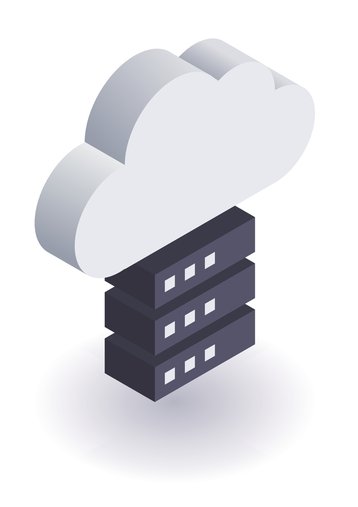The road to achieving digital transformation can be a bumpy one. Although the ultimate goal to improve how the business works on every level, it doesn’t happen overnight and requires lots of patience and planning to execute. It is also no surprise that technology advancement and adoption drives a lot of this transformation at the basic level. However, this also puts the technology under scrutiny from the whole organization and leads to questions about viability of adoption investment vs ROI.
But why should you choose to evolve your business IT if it is working just fine and most employees and customers get what they need, most of the time? Simply put, good enough is not good enough anymore. Organizations need to be more efficient, nimble and data-driven to take advantage of business opportunities in a competitive landscape. Not only this, but it can drive costs down, help your company scale and provide better insight into resource usage. It’s a route all organizations should be following, but ultimately it is a journey that requires planning and preparation.
One of the first obstacles on the road towards transformation is understanding how to allocate resources between (a) keeping the lights on and (b), researching, testing and implementing new, bleeding edge technology.
This predicament can be remedied by ensuring that the IT infrastructure your organization builds is resilient and able to adapt to change, both from unexpected disruptions and planned transformation initiatives. Essentially, an IT resilience strategy means your company is prepared, robust, and able to recover quickly from any speed bump it may hit, all while freeing up resources to address the twists and turns that come with overhauling the digital strategy.
For a complete IT resilient strategy, and to ensure that employees and customers don’t ever feel a disruption, you need to look out for three main signs on the road: continuous availability, workload mobility and cloud agility.
Continuous availability
The most important thing you can do is deliver an ‘always-on’ customer experience – no matter what planned or unplanned changes are going on in the infrastructure. At its core, continuous availability is the approach to an IT system that protects users against downtime by keeping customers connected to their documents, data, and business applications. Think of it as breakdown cover for your IT.
Current backup strategies must be reviewed as they are a critical to delivering an always-on customer experience. Backups have been an important part of any organisation’s IT strategy for many years, and having a copy of data and applications stored offsite ensures that a business can recover something no matter what happens to the production environment.
However, by modern day requirements, most of today’s technologies are inadequate for the job we need them to do. Periodic backups that only provide a snapshot in time are not compatible with demands for RPOs of seconds and RTOs of minutes. This, coupled with the complexity that often comes with legacy solutions and requires specific skillsets to manage, means that organizations should be looking to integrate alternatives that offer incremental, journal-based protection and can be accessed across multiple hypervisor, storage and cloud platforms.
Essentially, continuous availability means that whatever pot-hole you hit, be it a cyberattack, flood or planned work to improve IT, both you and your customers are completely protected against any disruption, good or bad.
Workload mobility
Workload mobility is the insurance, or the business confidence, that allows you to move applications and data workloads with ease, all while being completely protected. This can cover anything from migrations to consolidations as a result of mergers and acquisitions or new efficiencies being driven within your organization.
Although workload mobility is not a new concept, many IT practitioners are moving workloads around much more regularly due to the rapid adoption of public cloud. With the multitude of public cloud options and cloud service providers on the market, it’s more important than ever that IT teams have easy, seamless and risk-free workload mobility and agility in order to unlock their on-premises environments and extend their data centers to the cloud. This is also key to many digital transformation journeys as the cloud provides cutting edge features and capabilities for organisations that don’t want to be locked in to one vendor along the way.
Cloud agility
Fundamentally, creating a strategy that includes multi- and hybrid-cloud enables you to leverage the cloud to help accelerate your business and properly take advantage of what the cloud offers. The benefits of this include the freedom to choose your own cloud, and the ability to move to, from, and even between clouds that have vendor lock-in.
There are many factors that are driving enterprise adoption of multi-cloud strategies. After all, each cloud offers different services and features that may be more suited to specific applications than others. Think of it like a package for your car, maybe you want an electric car but with a sports car package? An urban car but with a good sound and media package? Organizations that choose to adopt a multi-cloud strategy are gaining the ability to cherry-pick the best levels of performance, response time and throughput for each.
As part of IT modernization and transformation, the common use case is moving disaster recovery and backup to the cloud, while reducing physical data centers. Speed-to-market is a critical element of digital transformation, and the cloud can provide that by driving new efficiencies and getting applications to market quicker, without having to worry about underlying infrastructure costs or maintenance.
All three of these elements working together ensure you can withstand any disruption and leverage any new technology seamlessly. Combine these with the likes of analytics, control and a unified platform for leveraging new technologies and your organization will have the elements to spark innovation and enhance business efficiency. Once you can become completely IT resilient you can confidently drive forward on your road to business transformation.
Caroline Seymour is director of product marketing at Zerto


